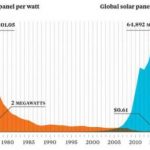Semiconductor stocks were battered by the recent market sell-off, but with several interesting trends like the Internet of Things and artificial intelligence on the rise, it is still an exciting time to be investing in this corner of the technology sector.
While tech behemoths like Microsoft (MSFT – Free Report) and Apple (AAPL – Free Report) may hog all the headlines, it has really been the companies powering their technologies—the semiconductor manufacturers—that have been garnering the attention of Wall Street.
Indeed, as our “Computer and Technology” sector has gained nearly 19.3% over the past year, semiconductor companies have been a driving factor behind its growth. The aforementioned emerging tech trends have created new consumer demand, and the semiconductor makers are delivering.
Luckily, the proven Zacks stock picking methods are effective across all industries. Check out these Zacks Rank #1 (Strong Buy) semiconductor stocks right now:
1. Micron Technology, Inc. (MU – Free Report)
Micron is one of the leading worldwide providers of semiconductor memory solutions. The company’s memory solutions are marketed towards customers in a variety of industries, including computer manufacturing, consumer electronics, and telecommunications. Micron’s rapid top and bottom line growth has made short-term price swings a common occurrence, but the firm has the potential to dominate for years.
Micron shares have gained more than 65% over the past year, but the stock has fallen about 12% since reaching new highs in November. That leaves MU with very attractive valuation metrics right now. Shares are trading at just 3.99x forward earnings, and with its PEG of just 0.40, investors are getting a great price for its growth potential as well.
Earnings estimates for Micron’s current fiscal year have trended significantly higher over the past 60 days. We now expect the company’s full-year EPS growth to touch 104% on the back of 39% revenue growth. Looking ahead, Micron is expected to improve its earnings at an annualized rate of 10% over the next three to five years.












Leave A Comment